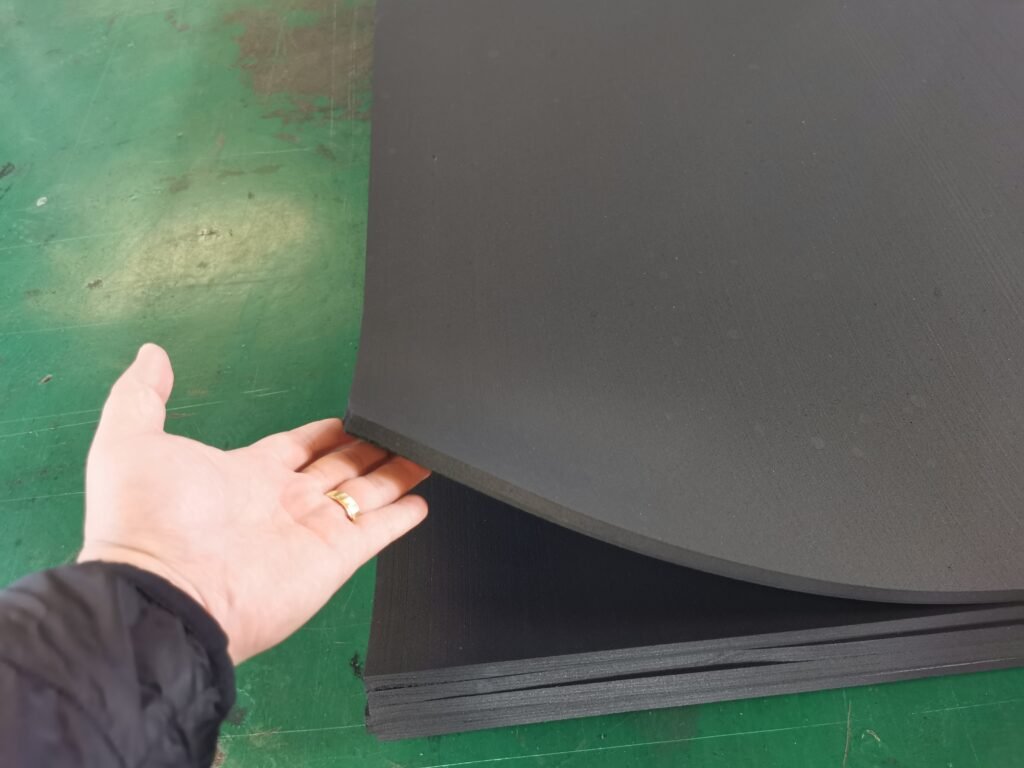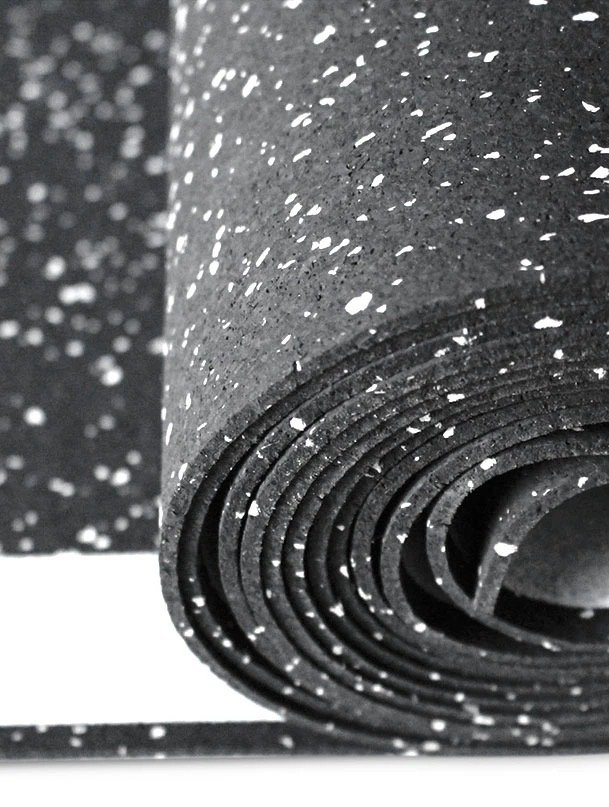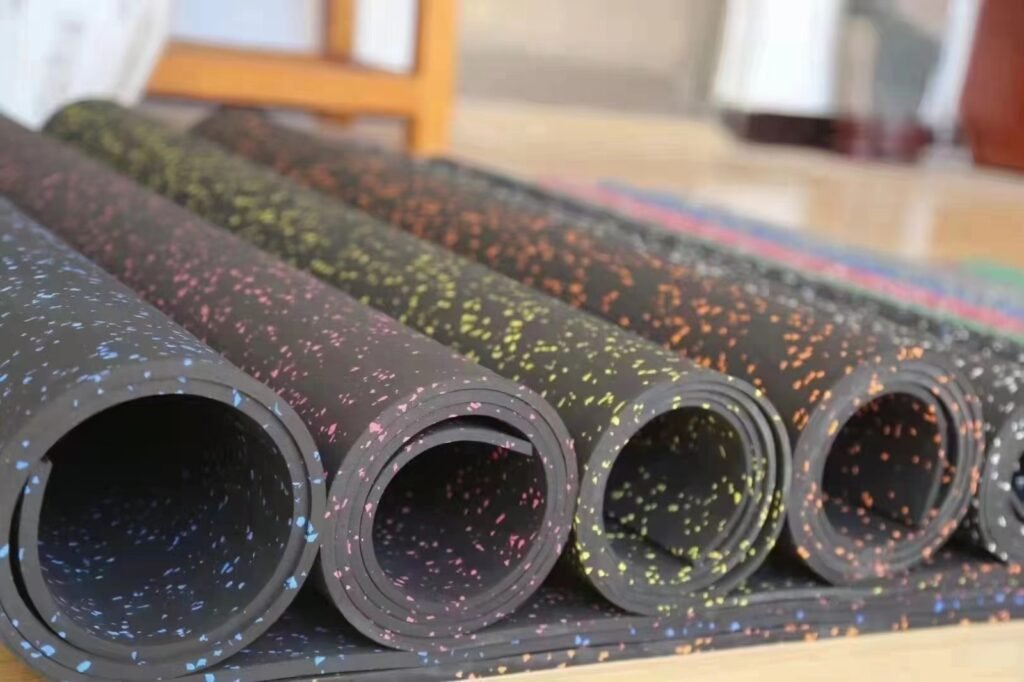
Have you ever walked into a room and noticed that something about the sound feels off? Could voices echo too much, or may the footsteps seem unnaturally loud? These instances are more common than you might think and are often the result of overlooked acoustics in room design. As surprising as it may sound, the type of flooring you choose plays a significant role in a room’s acoustic performance. But how exactly does flooring affect acoustics, and what can you do to optimize it?
This blog post aims to demystify the connection between flooring materials and room acoustics. From the basic principles of sound transmission to the measurable impact of different flooring types on sound, we will journey through the less explored aspect of interior design – acoustics. We will dive deep into the world of Sound Transmission Class (STC), Impact Insulation Class (IIC), and Delta IIC ratings and how they influence your room’s sound landscape.
We’ll also shed light on the role of recycled materials in flooring, the significance of construction assemblies in sound transmission, and provide practical tips to minimize unwanted noise.
Whether you’re a homeowner seeking to improve your living space’s sound environment, an architect looking for the best acoustic performance, or a curious reader, we’ve got you covered. Let’s embark on this aural journey to ensure that your next step is, quite literally, a sound choice.
Let me know if you would like any changes to this section or if it aligns with your requirements.

What is the Role of Acoustics in Room Design?
Acoustics is a branch of physics that studies sound, its production, transmission, and effects. Regarding room design, acoustics can be pivotal in determining how sound behaves within a space. From a whisper in a library to a concert in a hall, the acoustic environment significantly impacts our perception and experience of these sounds.
In-room design, acoustics serves two primary purposes: enhancing desired sounds and reducing or eliminating unwanted noise. This is achieved by strategically manipulating the sound absorption, diffusion, and reflection properties of the materials used in the room, such as walls, ceilings, and, importantly, floors.
Let’s look at a simple example. Picture a restaurant filled with people. The noise level could quickly become uncomfortable without considering acoustics, as conversations, clattering cutlery, and moving chairs bounce off hard surfaces and amplify. By contrast, a well-designed acoustic environment would help absorb and diffuse these sounds, ensuring patrons enjoy their meals in a pleasant atmosphere.
Similarly, in residential settings, good acoustics can mean the difference between clearly hearing your favorite show on TV and struggling to discern dialogue over the sound of footsteps on a hard floor upstairs. This is where the choice of flooring comes into play.
Choosing the right type of flooring can significantly affect a room’s acoustics. Different materials can absorb, reflect, or transmit sound, influencing airborne sound (such as voices or music) and structure-borne sound (like the noise of footsteps or items dropping on the floor).
So, how can we navigate this complex world of acoustics to make informed choices about flooring? Stay tuned as we delve into the science of sound transmission and discuss how different flooring materials affect room acoustics.

How is Sound Transmitted Through Different Materials?
Before we delve into how flooring materials affect sound, it’s essential to understand how sound transmission works. So, how exactly is sound transmitted through different materials?
In its essence, sound is a wave. It can be reflected, absorbed, or transmitted when it encounters a material, whether it’s the air, a wall, or a floor. The extent to which these occur largely depends on the material’s properties. Here’s where the concept of Sound Transmission Class (STC) comes into play.
What is Sound Transmission Class (STC)?
The Sound Transmission Class (STC) is a numerical rating of how well a material or construction assembly can reduce airborne sound transmission. The higher the STC rating, the better the material is at blocking sound.
In the flooring context, the STC rating can provide a benchmark for comparing the sound-reducing capabilities of different materials. However, it’s important to remember that STC mainly measures the transmission of airborne sounds, such as voices or music.

What's the Difference Between Airborne and Structure-Borne Sound?
While STC deals with airborne sound, structure-borne sound is another significant type of sound in the context of flooring. But what’s the difference between these two?
Airborne sound originates from a source not in contact with the structure, like a conversation or a radio. When this sound hits a material, part of it gets reflected into the room, the amount is absorbed, and interest is transmitted through it.
On the other hand, structure-borne sound, also known as impact noise, is generated when a source is in direct contact with the structure, like footsteps on a floor or a chair being dragged. This kind of sound can be particularly noticeable and disruptive in multi-story buildings.
With these basics in mind, let’s examine how different flooring materials affect sound transmission.

Does Flooring Material Affect Sound Transmission?
Choosing the right type of flooring can significantly affect a room’s acoustics. But how does the choice of flooring material influence the transmission of sound? Let’s explore the acoustic properties of various flooring materials.
How Does Laminate Flooring Affect Sound Transmission?
Laminate flooring, known for its durability and vast design options, also has unique acoustic properties. While it’s relatively good at blocking airborne sound, it can be pretty loud when walked upon, contributing to structure-borne noise. An acoustic underlay can help reduce this noise.
What about Ceramic Tile and Sound Transmission?
Ceramic tiles are hard and dense, making them great for reflecting sound. This can enhance the richness of music in a room, but it also means that tiles can create echo and amplify sounds, including impact noise. Using rugs or carpets can help mitigate this effect.

How Does Wood Flooring Impact Sound Transmission?
Hardwood floors naturally absorb some sound, providing a warmer and less echoey sound environment than tile. However, like laminate, they can produce a noticeable sound when walked upon. Acoustic underlay is particularly useful with hardwood floors to minimize impact noise.
Is Luxury Vinyl Tile Good for Sound Absorption?
Luxury Vinyl Tile (LVT) is popular due to its aesthetic appeal and durability. Regarding acoustics, LVT can provide better sound absorption than hard surfaces like tile and laminate, reducing airborne and impact noise.
How Does Carpet Influence Sound Transmission?
Carpet is the best flooring material for sound absorption. Its soft and porous nature enables it to absorb a high amount of sound.

How Crucial is the Role of Underlayment in Sound Transmission?
As we’ve explored the acoustic properties of different flooring materials, you may have noticed a recurring theme – the mention of underlayment. This brings us to a crucial aspect of room acoustics – the role of underlayment in sound transmission. But what is underlayment, and why does it matter?
What is Acoustic Underlay?
Acoustic underlay, or soundproof underlayment, is placed under the flooring. Its primary purpose is to provide a buffer between the sub-floor and the final floor covering, helping to reduce airborne and structure-borne sound transmission.
Underlayment materials range from standard foam to specialized materials such as cork or recycled rubber. These materials contribute to sound insulation and add comfort and durability to your flooring.

Does Underlayment Material and Thickness Affect Sound Insulation?
Yes, the underlayment’s material and thickness play a significant role in sound insulation. Thicker underlays generally provide better sound insulation, but the type of material is equally important. For instance, a thick foam underlay might offer a different level of sound insulation than a thinner but denser underlay made from recycled rubber.
In essence, selecting the proper underlayment can significantly enhance the acoustic performance of your flooring, reducing both airborne and impact sounds.
What is the Impact of Construction Assemblies on Acoustics?
While choosing flooring and underlayment is critical, it’s only part of the acoustic equation. Construction assemblies, including the concrete slab, cement board, and other structural components, play a pivotal role in determining a room’s acoustics.
What Role Do Construction Assemblies Play in Acoustics?
Construction assemblies refer to the combination of materials used to construct a building’s structural components, such as walls, ceilings, and floors. These assemblies, including the concrete slab or cement board under your flooring, can significantly impact sound transmission.
For instance, a thick concrete slab can provide an excellent barrier against airborne sound but may transmit structure-borne sound efficiently. On the other hand, a cement board might not block airborne sound as effectively but could reduce impact sound when combined with an appropriate underlayment.

How Do Construction Assemblies Interact with Flooring and Ceiling to Impact Sound Transmission?
The interaction of construction assemblies with flooring and ceiling materials significantly affects sound transmission. For example, a hard flooring material on a concrete slab might amplify structure-borne sounds, while a carpet on the same slab could reduce it.
Similarly, the ceiling plays a crucial role in the overall acoustic environment. In a multi-story building, the top of one floor becomes the floor of the next, forming a floor-ceiling assembly. The materials and construction techniques can significantly influence the sound transmitted between levels.
Therefore, considering construction assemblies, flooring choice, and underlayment can provide a comprehensive approach to optimizing room acoustics.
Please let me know if this content aligns with your requirements and if you want any changes or additions.

How Can You Measure the Acoustic Impact of Flooring?
Once you understand the impact of different materials on room acoustics, you might wonder, “How can I measure this impact?” This is where concepts like Impact Insulation Class (IIC) and Delta IIC rating come into play.
What is the Impact Insulation Class (IIC) and Delta IIC Rating?
Impact Insulation Class (IIC) measures a floor’s ability to insulate against structure-borne or impact noise, such as footsteps or moving furniture. Like STC, a higher IIC rating means better sound insulation.
The Delta IIC rating, on the other hand, measures how much an underlay can improve the impact sound insulation of a floor. If you plan to install an underlay beneath your flooring, the Delta IIC rating can give you an idea of how much improvement to expect regarding impact sound insulation.
How Can These Measurements Guide Your Flooring Choices?
Consider an example where you’re living in an apartment with high footfall noise from the upper level. In this case, choosing a flooring material and underlay with high IIC and Delta IIC ratings could significantly reduce the noise levels, providing a quieter and more peaceful living environment.

What Role Does Recycled Material Play in Acoustic Performance?
With the growing emphasis on sustainability, recycled materials like recycled rubber are gaining popularity in the flooring world. But how do these materials impact acoustic performance?
What are the Advantages of Using Recycled Materials in Flooring?
In addition to being an environmentally friendly choice, recycled materials like rubber have excellent sound-absorbing properties, making them a great choice for underlay. Moreover, these materials are durable and resilient, providing a comfortable walking surface while improving your floor’s lifespan.
How Do Recycled Materials Impact Acoustic Performance and Sustainability?
Recycled rubber underlay can significantly reduce airborne and impact noise and improve room acoustics. At the same time, choosing recycled materials reduces waste, contributes to resource conservation, and promotes sustainability.
How to Minimize Unwanted Noise in Your Rooms?
You can adopt numerous strategies to minimize unwanted noise in your rooms. From carefully selecting your flooring and underlay materials based on their STC and IIC ratings to using rugs and carpets for sound absorption, there’s a lot you can do to create a peaceful, noise-free environment.

Proven Results: Case Studies of Effective Sound Insulation
Practical examples often speak louder than theory. Numerous case studies demonstrate the successful implementation of sound insulation in floor-ceiling assemblies. These cases range from residential apartments to commercial spaces, benefiting from improved acoustics through careful material selection and assembly design.
As we wrap up this comprehensive exploration of flooring and acoustics, it’s clear that the correlation between the two is intricate and significant. Several factors influence the acoustic performance of a room, from the type of flooring material to the underlayment, construction assemblies, and even the use of recycled materials.
We’ve learned that every material brings unique acoustic properties to the table. Hard, dense materials like stone or marble can reflect sound, potentially increasing airborne noise. Conversely, softer materials like carpets can absorb sound and reduce noise levels.
One standout point is the critical role of underlayment in sound insulation. Regardless of the flooring material, an appropriate underlay can significantly enhance the acoustic performance, helping to keep your spaces quieter and more serene.
Moreover, the increasing use of recycled materials such as rubber contributes positively to the environment and improves acoustic performance, presenting a win-win scenario.
But remember, the journey to achieving good acoustics continues beyond here. Consider their acoustic properties as you choose materials for your next building or renovation project. Measure their IIC and STC ratings, and remember to consider your space’s unique nature.


